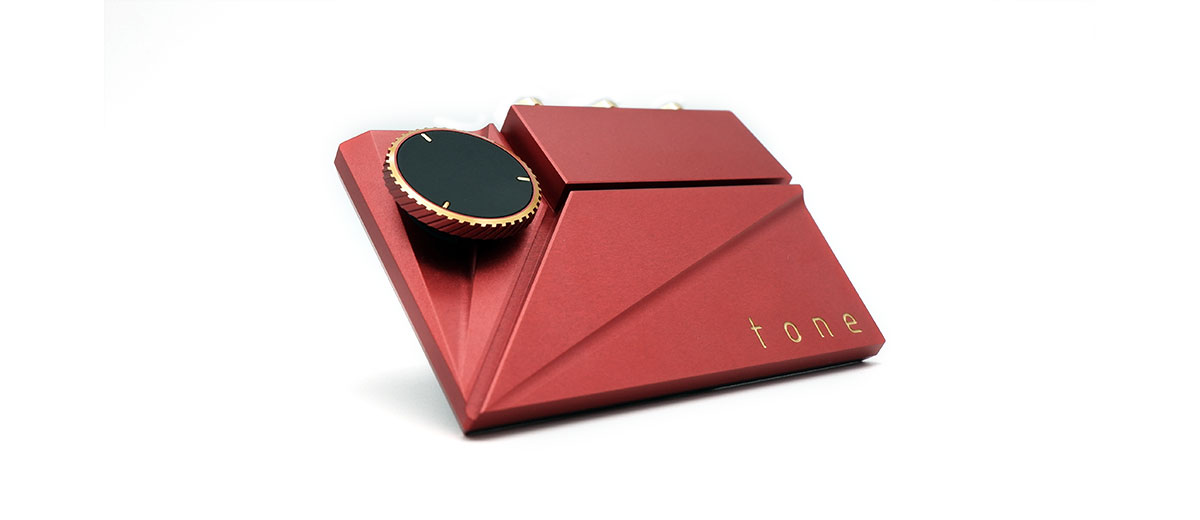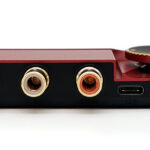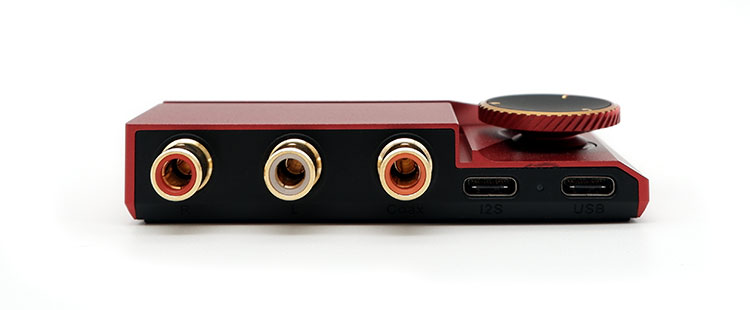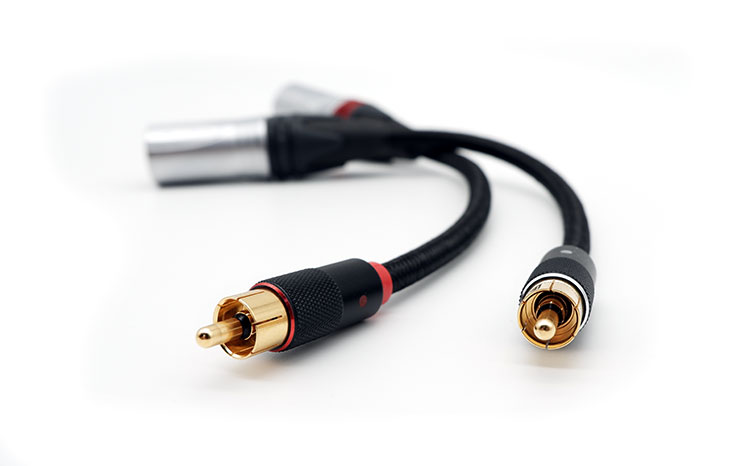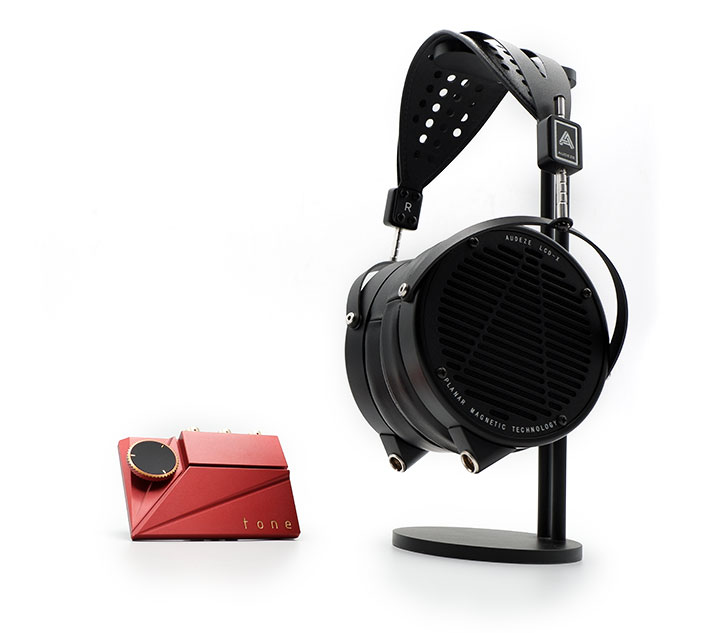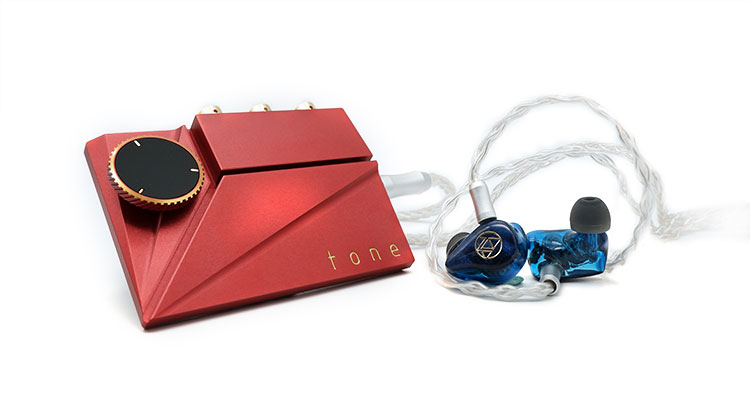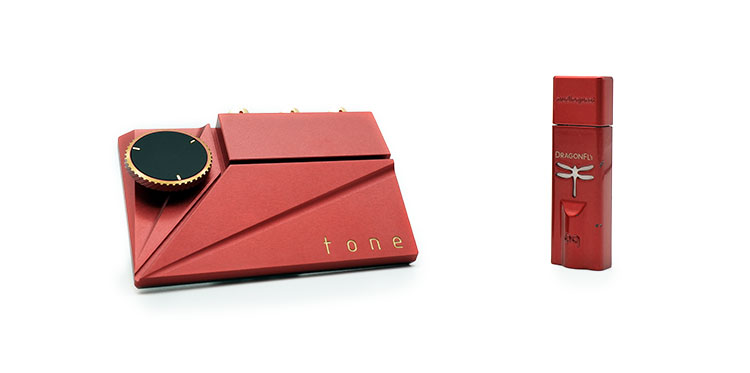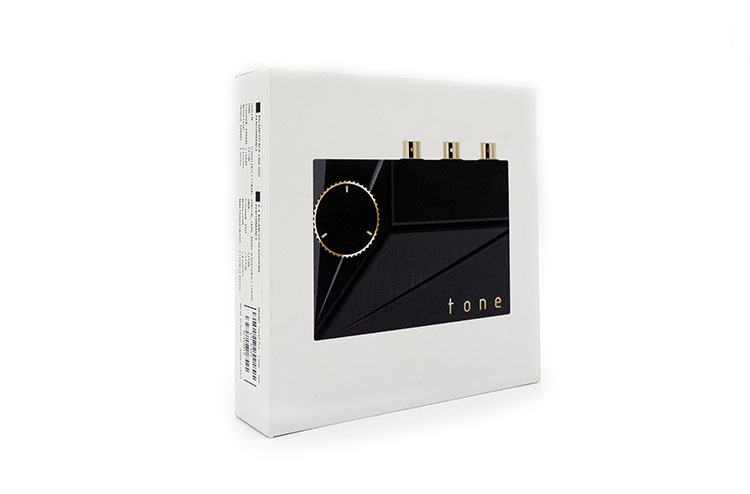The Khadas Tone2 Pro is a USB-powered DAC/Amplifier featuring bitperfect decoding up to DSD512, MQA, and balanced output capability. It is priced at $199.90.
Disclaimer: The Khadas Tone2 sent to us is a sample in exchange for our honest opinion. We thank the team at HiFiGo and Khadas for giving us this opportunity.
To read more about similar products we reviewed on Headfonics click here.
Note, this review follows our new scoring guidelines for 2021 which you can read up on here.
Background
Khadas is a brand which is being used by Khadas Technology Co., Ltd, located in Shenzhen, China. It was founded in 2020, but the parent company was founded considerably earlier in 2014. In the early days, Khadas mainly focused on Single Board Computers based on Amlogic and Rockchip.
The audiophile community took notice of the original Khadas tone board last year, because of excellent measurements. The original Khadas tone board was a board with a USB and Coaxial input but was mainly designed to be integrated into their Single Board Computers, so a separate case had to be bought from 3rd party sellers, or you’d have to make one yourself.
This year, Khadas launched the 2nd version of their tone board which is called the Khadas Tone2 Pro. It should be noted that the word “board” has been dropped on the Tone2 Pro because it has already evolved past being just a board.
Although the Tone2 Pro is built around the same DAC chip as the original Tone Board, this is now an all-in-one solution with a built-in balanced headphone amplifier and an improved USB interface with the XU-216 XMOS Chipset with MQA decoding.
Design
While my wife would leave me to my headphones, amps, and DACs. However, seeing the Tone2 Pro is one of the few times that she has commented on how nicely it sits on my desk. So wife acceptance factor(WAF) is pretty high with this one.
The Tone2 Pro dropped the word “board” from the name because it has evolved into something much more. Physically, it’s now a finished product, with an aluminum chassis that doubles as a sleek case, and as a heatsink. It’s a smaller device, with the overall dimensions of the device being close to a standard pack of playing cards, and it comes in black, red, and blue.
The bottom of the device is lined with rubber. This prevents the Tone2 Pro from sliding around your table despite being a smaller and lighter device.
Mounted on top of the device is a volume knob, while the headphone outputs can be found on the right side. USB C, power, and coaxial inputs and RCA outputs are all found in the rear of the device.
Volume Knob
Mounted on the upper left-hand corner of the Tone2 Pro is the volume knob with an LED ring that indicates the various functions of the knob.
Upon first reading the manual, I was lead to believe that the volume knob is pressed from the side of the tone board, but it should be pressed from the rear to activate various functions. So make sure you’re pressing the wheel the right way, otherwise, the various functions will not be activated.
The volume knob has a good amount of resistance, so controlling the volume level precisely will be easy. By default, the volume knob will control the volume when it is spun, however clicking it will allow the user to control various functions including play/pause, locking/unlocking, and power off.
Double-clicking will bring the control into different modes such as track control, headphone output gain, input, and filters. Each of the control modes has their color code displayed on the LED ring which are listed in the manual.
The various control modes might not be that intuitive at first though, but the most common function which is volume control is quite intuitive out of the box.
I/O
The inputs that are available on the Tone2 Pro are similar to the ones that are available on the original Tone Board, which are USB C and Coaxial. However, this has an additional USB C port that can be used for a separate linear power supply to ensure cleaner power delivery or an optional Bluetooth expansion card that will be made available later on.
The outputs that are available on the Tone2 Pro include a 3.5mm single-ended output capable of 125mW into 32Ω, and a 4.4mm balanced output capable of 211mW into 32Ω.
While the headphone amplifier section is perfectly capable of driving most modern IEMs and moderately sensitive headphones, the Tone2 Pro also features a specialized balanced RCA output in the rear. The output is also backward compatible with standard single-ended RCA output.
Features
Balanced RCA
Balanced RCA terminals may look similar to standard RCA outputs, however, they have an additional electrical connection inside that enables the transmission of the differential signal through that pin.
This would require a special Balanced RCA cable that will convert the signal into a 3-pin XLR connection. A Balanced RCA jack is also available for sale on the Khadas website for creating balanced cables with other terminations.
The balanced RCA jack shares the same dimensions as the standard RCA jack. However, the balanced RCA jack has a TS connection on the center pin, instead of the standard center pin of the RCA jack. This is a smart solution to save some space because this also means that the balanced RCA connection is still compatible with standard RCA jacks in single-ended mode.
Full MQA Decoding
The Khadas Tone2 Pro features an onboard MQA full decoder which allows for MQA files to be unfolded at the hardware level.
This is different from most MQA enabled devices that are only MQA renderers that will require a core decoder in the form of a computer or other devices that can do the 1st level of unfolding. This allows the Tone2 Pro more control over the decoding process of the MQA file.
Package & Accessories
The Tone2 Pro comes in a white box with relevant branding and imagery printed on the front. The rear of the box has some useful information regarding the various functions of each part of the Tone board, while the side features icons of the available features.
Inside the box is the manual, the Tone2 Pro itself, and finally a 1m long USB C to USB C cable. The cable can be used for both Android Phones, most newer PCs, and Macs. If you are using an iPhone you will require a separate cable though.
Sound Impressions
DAC
As a DAC, the Tone2 Pro is a neutral DAC. No frequency region is artificially accentuated to give the impression that there is an additional amount of detail.
Each note from the Tone2 Pro is presented with a good amount of accuracy, and texture, with a generally nimble presentation. The bass is punchy and flowy, while the midrange has a natural amount of decay. The treble is smooth, and not overly emphasized.
The biggest difference between using the balanced RCA output of the Tone2 Pro against a standard RCA cable is that the balanced outputs deliver a touch more punch and slam. Though both the balanced and single-ended RCA outputs would end up slightly lacking the emotional engagement of a crescendo due to a slight lack in dynamic range.
The soundstage on the Tone2 Pro is fairly expansive, and it doesn’t feel like it has a boundary to the sound stage. However, most elements of the soundstage are fairly intimate, but layering within the soundstage is executed well.
Directionality within the soundstage is also very accurate, as each sound element can easily be distinguished. The Tone2 Pro can also easily form an accurate center image.
Headphone Amp
As a DAC/amp, the Tone2 Pro has a generally neutral tonality, with a touch of mid-bass emphasis. It remains fairly nimble in its presentation, so it won’t add any weight to bass notes for example.
Backgrounds are pitch black, where silent passages would require me to look at the volume knob LED to make sure that the Tone2 Pro is still running. Although details within the track are present, textures could still be more chiseled.
With the limited power available to the Tone2 Pro, it’s understandable that the headphone amp section would slightly lack dynamics, even on the 4.4mm balanced output.
Emotionally engaging crescendos would end up being less engaging, while punch and slam would not be as prominent as other full desktop solutions. This is understandable though since the Tone2 Pro just sips power from a regular USB port.
Sound Summary
As a DAC, the Tone2 Pro generally keeps itself neutral, as driving power will be left to whatever headphone amplifier that it is connected to.
As a headphone amp, it manages to be very clean and accurate, however, it ends up lacking a bit of punch, slam, and dynamics due to the power limits inherent in a USB bus-powered device, which the headphone amp section compensates for with a slight mid-bass warmth.
Synergy
Power & Efficiency
With its minuscule size, it would be easy to dismiss the Tone2 Pro as a DAC that just happens to have a headphone amp section for convenience.
However, the amp section is surprisingly powerful, as it can even drive my 420Ω Audio Technica ATH-ADX5000, even when the specs just listed 300Ω as the limit for the balanced output. The headphone section also comfortably powered my Hifiman Ananda, and my Audeze LCD-X.
Pairings
Audeze LCD-X
While the Tone2 Pro can easily power most headphones in my collection, it ended up having great synergy with headphones like the LCD-X which are easier to push while already having an inherently punchy character.
This ends up masking the slight weakness in the punch of the Tone2 Pro’s low-end performance. The slight mid-bass hump also accentuated the LCD-X’s more neutral tonality, making it a bit more exciting overall.
As a DAC, the Tone2 Pro is much easier to match, since it is very clean and fairly neutral. Using the balanced RCA outputs would make it a good match for balanced headphone amplifiers like my Burson Soloist 3X, or single-ended amplifiers like the Topping L30.
This would then create a complete system that can serve as great upstream equipment for most headphones, only lacking in dynamics when compared to higher-end DACs such as my Chord 2qute.
Mangird MT4
The Tone2 Pro can power moderately sensitive headphones, but it can also reign in the power, and drive IEMs quite well. While the MT4 is plugged into the Tone2 Pro, it’s very silent, and there is no evidence of hiss even when the Tone2 Pro is maxed out in high gain.
With the MT4’s slightly punchy character, it does not require the upstream gear to be particularly punchy. The slight mid-bass hump also accentuates the MT4’s more neutral character. With the MT4’s more plucked presentation, the Tone2 Pro’s pleasant harmonic richness creates a synergistic combination with the MT4.
With the trend of most headphones coming down in sensitivity as of late, the Tone2 Pro will make a good match for most modern headphones. While it delivers more power than the minuscule size might suggest, it is also quiet enough to drive more sensitive loads such as IEMs.
Select Comparisons
Topping E30/L30
Technical
Physically, the Tone2 Pro is much smaller than the Topping E30/L30 stack, since the E30/L30 comes in 2 pieces, while the Tone2 Pro comes in a neat little credit card-sized package. Since the Tone2 Pro can be bus-powered, it is significantly more convenient, while the E30/L30 stack needs 2 power supplies to run.
Internally, the Tone2 Pro packs an ESS 9028Q2M chip, while the E30 has an AKM 4493 DAC chip. In terms of outputs, the Tone2 Pro has balanced outputs both for the line-level outputs as well as the headphone output.
Finally, the Tone2 Pro has MQA full decoding capabilities, while the E30 is limited to just decoding DSD512 and 32bit/786khz PCM. The E30 has a remote control, an optical input, and some pre-out controls though.
With the larger power supplies, the L30’s headphone amp section can push out quite a bit more power. With the L30 having a maximum output of 2.3W into 32Ω, while the Tone2 Pro can only push out 211mW into 32Ω through the 4.4mm balanced output. Although typically the Tone2 Pro can sufficiently drive my headphones through the balanced port.
DAC comparison
As a pure DAC, I compared both fed into my Burson Soloist 3X analog amplifier. With both DACs being run at their full line level, and the Tone2 Pro running through a pair of balanced RCA to 3-pin XLR cables, while the E30 is limited to a pair of standard RCA cables.
The Tone2 Pro shows a bit more control especially when tracks start to get busier with cymbal crashes mixed with drum beats. It manages to be slightly thicker and smoother when compared to the E30.
Bass notes tend to have a more hollowed texture with the E30. Treble on the other hand sounds slightly brighter on the E30, while the Tone2 Pro has a slightly more detailed but slightly smoother treble region.
Imaging is a touch more accurate on the Tone2 Pro, where each image is more tangible and slightly larger than on the E30. Dynamic range is a bit more apparent on the E30 though, since it has an external power supply by default, even when the same ifi iPower power supply is plugged into the Tone2 Pro. The sense of punch of bass notes is slightly more apparent on the Tone2 Pro though.
DAC/Amp system comparison
The Tone2 Pro is a complete DAC/amp system, while the E30 needs to be connected to the L30 for a complete headphone source chain.
When comparing the 2, both the specs sheet as well as the physical dimensions say that the L30 can push more power into headphones. Also, the L30 has 3 gain stages, instead of just 2 available with the Tone2 Pro, with the L30 having a switchable pre-amp out.
The E30/L30 chain is slightly brighter and more liquid in tone when compared to the Tone2 Pro. However, with more power, there is a better sense of scale and authority, especially in bass notes.
Midrange textures are a bit more defined on the Tone2 Pro, while the L30 has a slightly thicker presentation giving it a more natural sense of decay. Treble is a bit more controlled on the Tone2 Pro, while the E30/L30 combo ventures into being sibilant at times.
I also tried feeding the L30 with the Tone2 Pro as a source. And with additional power from the L30, the Tone2 Pro and L30 combination can power most headphones with more authority and with a wider soundstage than the Tone2 Pro on its own.
This combination also creates a very engaging listen, with a good sense of punch in the bass region, while having a more textured midrange and a smoother but highly detailed treble response.
The dynamic range still is a bit more apparent with the E30/L30 combo though. The soundstage also ends up slightly larger with the E30/L30 combo, while imaging is about equally resolving on both setups.
Conclusion
Due to the limits on the available power on the Tone2 Pro, it comes short in some aspects particularly dynamics when it’s compared to even a small DAC/Amp stack like the E30/L30.
The DAC section of the Tone2 Pro is a bit more resolving than the E30. Using the Tone2 Pro to feed the L30 through RCA cables, the presentation became slightly more intimate, but at the same time significantly more dynamic, punchy, and detailed while steering clear of being sibilant.
Audioquest Dragonfly Red
Technical
The Khadas Tone2 Pro and the Dragonfly have quite a few things in common with a similar SRP price point. They are both MQA capable, with the Red capable of MQA rendering, while Tone2 Pro is capable of full MQA decoding. The more aged Dragonfly Red sports an older ESS 9016 DAC chip, while the Tone2 Pro has an ESS 9028Q2M inside.
In terms of the form factor, the Dragonfly Red, which is about the size of a regular USB drive is significantly smaller than the Tone2 Pro.
The Dragonfly Red is limited to just a USB input and a single-ended 3.5mm stereo output that doubles as a line-level output, the Tone2 Pro has a few extra features like a physical volume knob, balanced DAC output, balanced headphone outputs, and a coaxial digital input.
With the option for 4.4mm balanced output available on the Tone2 Pro, there is a significant difference in the voltage swing available at the headphone output. With the Dragonfly Red limited to just 2.1V, while the balanced output of the Tone2 Pro tops out at 5.0V for high impedance headphones.
Both devices are usually connected through just USB bus power, however, the Tone2 Pro does have a second USB-C (I2S) port that supports 5V linear power supplies.
Sound Comparison
As a pure DAC, the Dragonfly Red has a slightly weightier and more intimate presentation. The Tone2 Pro has a bit more detail retrieval and a more textured presentation. Treble is equally smooth on the 2 DACs though, so neither of them would have any issues when it comes to more sibilant tracks.
In terms of soundstage, the Tone2 Pro is wider than the Dragonfly Red, imaging directionality and depth are about equal on both, but the Dragonfly Red creates larger and more vivid images within the soundstage. Notes are slightly more authoritative on the Dragonfly Red though.
As a DAC/amp, the Tone2 Pro pushes a lot more power than the Dragonfly Red. This gives the Tone2 Pro the ability to push headphones like the Sennheiser HD600 with much more ease. I’ve had to push the Dragonfly Red to the maximum volume to reach a comfortable listening volume on my HD600, while the Tone2 Pro is just at around 80% at low gain.
The tonality of the Tone2 Pro and the Dragonfly Red is quite similar. Where they both have a nice and smooth treble region, with a controlled bass region. The midrange is the biggest difference, where the Tone2 Pro has a slightly mid-bass hump, while the Dragonfly Red has a slightly more recessed mid-range.
Aside from being able to push more voltage into headphones, the Tone2 Pro provides more dynamic range, making softer passages more gentle while crescendos emotionally draw me into the music more.
Percussive attacks also have a bit more bite with the Tone2 Pro. The soundstage is also slightly wider, while imaging directionality and texture are about equal. The depth of the soundstage is also very similar, but the Tone2 Pro sounds slightly more capable because it utilizes the larger soundstage quite capably.
Conclusion
The Dragonfly Red became very popular when it was released more than 5 years ago, and it has since been a benchmark for the sub-$200 MQA DAC market.
The Tone2 Pro retains the smoother but still strikingly clear treble while improving midrange texture, soundstage, and of course adding in a more powerful headphone amplifier and balanced line-level outs don’t hurt.
Although the Dragonfly Red is still a perfectly capable device, the improvements that the Tone2 Pro offers just show how age is already catching up to the Dragonfly Red.
Our Verdict
When the original Khadas Tone board was released, it received numerous positive reviews. When I had the chance to listen to it, I understood what the hype was about. However, it was obvious that the original Tone Board was designed as part of their Single Board computers. It sounded good, but it was just a DAC on a board that didn’t even have a case.
Fast forward to 2021, and Khadas took the original Tone Board and integrated it into a neat little all-in-one package. They made quite a few improvements, including putting in a nice aluminum case, a volume knob interface with LEDs, MQA full decoding capability, and a capable headphone amp.
The DAC section offers crystal clear presentation with a smooth and even tonality that bests most DACs in its price range, while also featuring a surprisingly capable headphone amp that can capably power moderately sensitive headphones like the Sennheiser HD600.
While it seems like Khadas crammed every possible feature into the Tone2 Pro, they certainly did not make any big compromises.
Khadas Tone2 Pro Specifications
- DAC + Headphone Amplifier – Tone2 Pro combines the ESS ES9038Q2M with x4 OPA1612 operational amplifiers that deliver superior audio quality.
- High Performance – Up to 32bit 384KHz sample rate, bit-perfect DSD512, and -118dB THD+N (line-out).
- Hardware MQA Decoding – XMOS XU216 processor for full MQA decoding, enabling next-gen “original master quality” web streaming and audio playback.
- Balanced RCA – Next-generation “balanced RCA line-out” with 3-pin output, sets a new interface standard for the Hi-Fi industry.
- Linear Power Supply – Tone2 Pro has a second USB-C (I2S) port that supports 5V linear power supplies for ultra-clean signal-to-noise ratios.
- Headphone Amplifier Performance(4.4mm Balanced Port)
- Output Impedance- 2.4Ω
- THD+N, 1kHz, 300Ω- 0.000158%(-116dB)
- Max Output @300Ω- 83mW(5.0Vrms)
- Max Output @150Ω- 167mW(5.0Vrms)
- Max Output @32Ω- 211mW(2.6Vrms)
- Max Output @16Ω- 123mW(1.4Vrms)
- Headphone Amplifier Performance(3.5mm Single-Ended)
- Output Impedance- 1.2Ω
- THD+N, 1kHz, 150Ω- 0.000200%(-114dB)
- Max Output @150Ω- 35.3mW(2.3Vrms)
- Max Output @32Ω- 125mW(2.0Vrms)
- Max Output @16Ω- 114mW(1.35Vrms)




